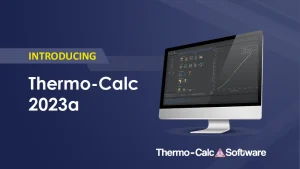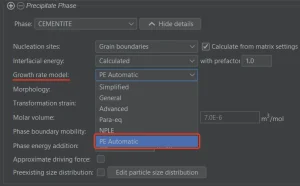Thermo-Calc 2023a Available Now
Update Released
An update to Thermo-Calc 2023a was released on February 23, 2023. If you installed Thermo-Calc 2023a before February 23, you are encouraged to update your software as this update includes critical bug fixes.
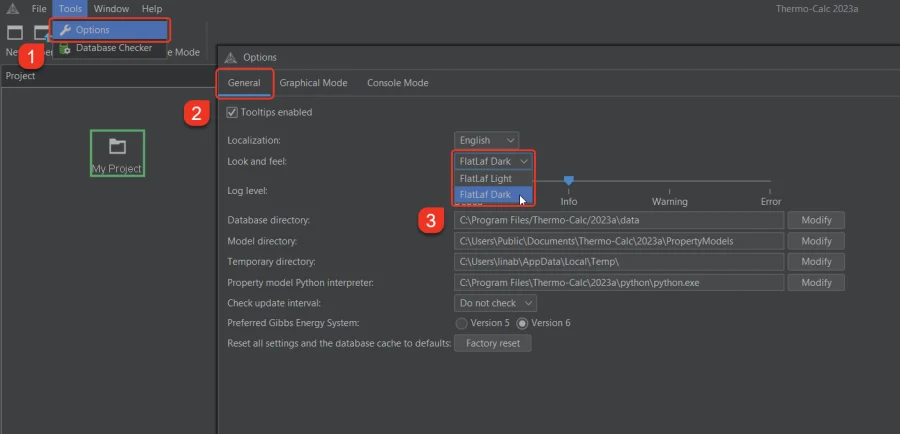
Dark Mode is now available for the Graphical User Interface of Thermo-Calc.
Calculate Temperatures Below Solidus
The Scheil Calculator now allows users to calculate solid state properties at temperatures below the solidus temperature, down to room temperature. This new feature is only available for the properties that use the new freeze-in evaluation method listed above.
Calculate Evaporation Properties Above Liquidus
Three new evaporation properties have also been added to the Scheil Calculator, which allow users to calculate evaporation above liquidus: molar mass of gas, driving force for evaporation, and evaporation enthalpy.
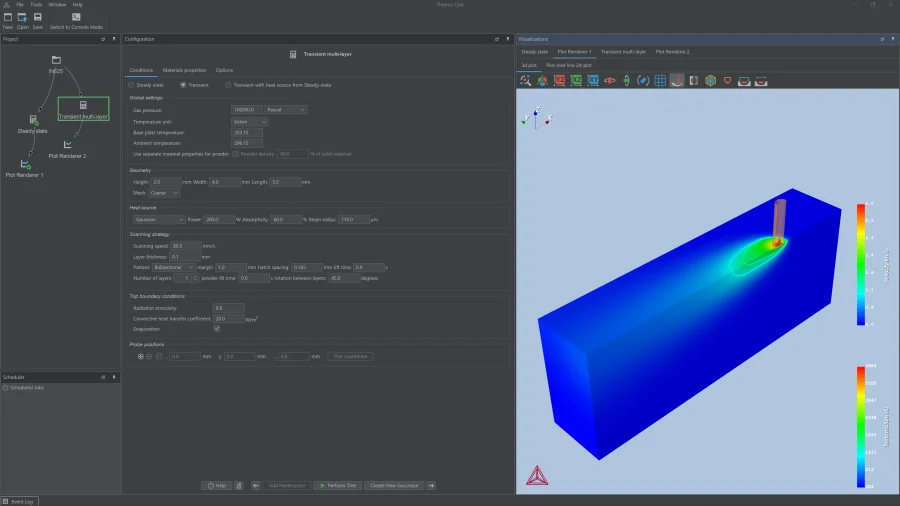
Overview of a calculation setup in the Additive Manufacturing Module.
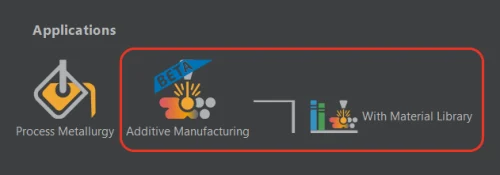
The template for the Additive Manufacturing Module on the home screen of Thermo-Calc.
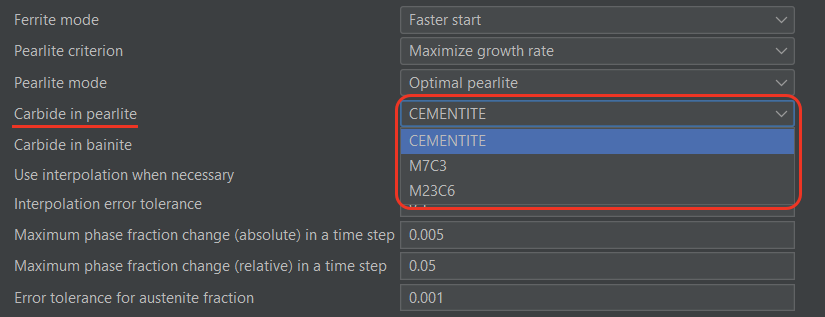
Users can now choose which type of carbide will be present in pearlite and bainite in the CCT and TTT Diagram Property Models in the Steel Model Library. This is particularly useful for steels with higher Cr contents.
Eight New and Updated Databases
New Databases
MOBZR1: Zr-alloys Mobility Database
The Zirconium-based Alloys Mobility Database (MOBZR1) is a completely new mobilities database intended to be used in combination with our Zirconium-based Alloys Thermodynamic and Properties Database, TCZR1. The database is designed for simulation of diffusion controlled phenomena using the add-on Diffusion Module (DICTRA) and/or Precipitation Module (TC-PRISMA). It can also be used together with any Thermo‑Calc programming interface such as TC-Python. MOBZR1 includes:
TCOX12: Metal Oxide Solutions Database
New elements and related binary, ternary, and higher order systems:
Molar volume, viscosity and surface tension are assessed for the new additions.
Other changes:
TCTI5: Ti/TiAl-based Alloys Database
The Ti/TiAl-based Alloys Database is the successful conclusion of the ADVANCE Project, an ambitious experimental program consisting of four partners from three countries and spanning over almost 4 years.
Updated Databases
TCHEA6.1: High Entropy Alloys Database
The high entropy alloys database was updated to version TCHEA6.1. Users who have a license for TCHEA6 and a valid Maintenance and Support Subscription receive this upgrade for free.
TCAL8.2: Aluminum-based Alloys Database
The aluminum-based alloys database was updated to version TCAL8.2. Users who have a license for TCAL8 and a valid Maintenance and Support Subscription receive this upgrade for free.
TCCU5.1: Cu-based Alloys Database
The copper-based alloys database was updated to version TCCU5.1. Users who have a license for TCCU5 and a valid Maintenance and Support Subscription receive this upgrade for free.
MOBTI4.1: Ti/TiAl-based Alloys Mobility Database
The titanium and TiAl-based alloys mobility database was updated to version MOBTI4.1. Users who have a license for MOBTI4 and a valid Maintenance and Support Subscription receive this upgrade for free.
